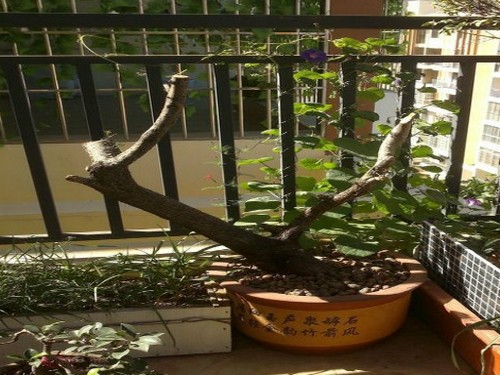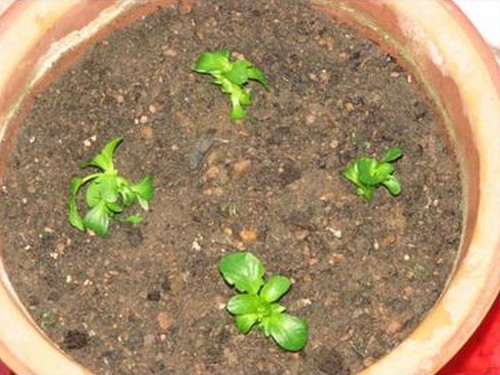Sowing and propagation methods of Robinia pseudoacacia
Robinia pseudoacacia is a kind of tree species with strong vitality and fecundity. it can not only be used to landscape, watch and purify the urban air, but also be used for afforestation to protect the ecological environment. Although Robinia pseudoacacia has a certain ability to resist drought, not resistant to water and moisture, lax requirements on the soil, strong adaptability, but we still need to master some basic knowledge of Robinia pseudoacacia planting in order to better protect it.

Robinia pseudoacacia trees are generally propagated by sowing. The sowing of Robinia pseudoacacia needs to go through the process of sun drying, removing pericarp, blighted grains and inclusions after seed collection, and then obtain pure seeds. When sowing Robinia pseudoacacia trees, we should choose places with good watering conditions and good drainage conditions, and the soil should be fertile, and sandy loam is the best soil for raising seedlings. The sowing of Robinia pseudoacacia is mainly in spring, and it can be sown in rainy season in arid areas.
Robinia pseudoacacia can be afforested by sowing, but it is usually sown in March, when the temperature is low, which is conducive to seed germination, and it is necessary to accelerate germination before sowing.
Seed soaking: Robinia pseudoacacia seed coat thick and hard, poor water permeability, in order to improve the germination rate, shorten the germination period, seedling emergence neatly, seed treatment must be carried out before sowing. Pour hot water about 55 ℃ into the seed container, pour and stir until it is not hot. Soak overnight and use a sieve to remove the swollen seeds. The remaining unswollen hard seeds are treated with 85 ℃ of water for 1 or 2 times until most of the seeds are swollen. If there are hard seeds that are difficult to expand, wrap them in boiling water for 10 s, lift them quickly, and soak them in cold water overnight.
Sowing: generally sowing in March, when the temperature is low, which is conducive to seed germination. Before sowing, sow the containers containing nutritious soil with water to sink the soil. Some containers contain more nutritious soil. Pound a hole with a stick and sow the germinated seeds in the container with 3 seeds in each container. Then spread the fine sand evenly over the container and cover the soil so that the seeds are not visible.
Sprouting: in order to make the seeds germinate evenly and emerge quickly, sprouting should be carried out before sowing. Put the swollen seeds in the bamboo basket, cover with wet towels or wet cloth, place them in a ventilated sunny or warm place and wash the seeds twice a day with clean water. After about 5 days, the seeds can be sown when the crack mouth of the seeds is exposed.
Time: 2019-06-11 Click:
- Prev

Breeding methods and matters needing attention of butterfly flower
The butterfly flower was originally a perennial perennial grass flower, but it has become an annual or biennial grass flower after artificial cultivation, which needs to be sowed every year. Butterfly flower commonly used breeding methods are sowing, cutting, ramet, sowing time has strict requirements, take a look at the specific breeding methods and matters needing attention! [sowing propagation] it is best to sow seeds in autumn in September.
- Next

Propagation method of Tripterygium
Begonia sticking stem commonly used ramet, cutting propagation, sowing, striping can also be used, but rarely used, the best propagation time: spring, summer, autumn, spring is the best. 1. Sowing, propagation, sowing and propagation can obtain a large number of neat seedlings, but it is not easy to maintain the original variety characteristics.
Related
- Fuxing push coffee new agricultural production and marketing class: lack of small-scale processing plants
- Jujube rice field leisure farm deep ploughing Yilan for five years to create a space for organic food and play
- Nongyu Farm-A trial of organic papaya for brave women with advanced technology
- Four points for attention in the prevention and control of diseases and insect pests of edible fungi
- How to add nutrient solution to Edible Fungi
- Is there any good way to control edible fungus mites?
- Open Inoculation Technology of Edible Fungi
- Is there any clever way to use fertilizer for edible fungus in winter?
- What agents are used to kill the pathogens of edible fungi in the mushroom shed?
- Rapid drying of Edible Fungi

